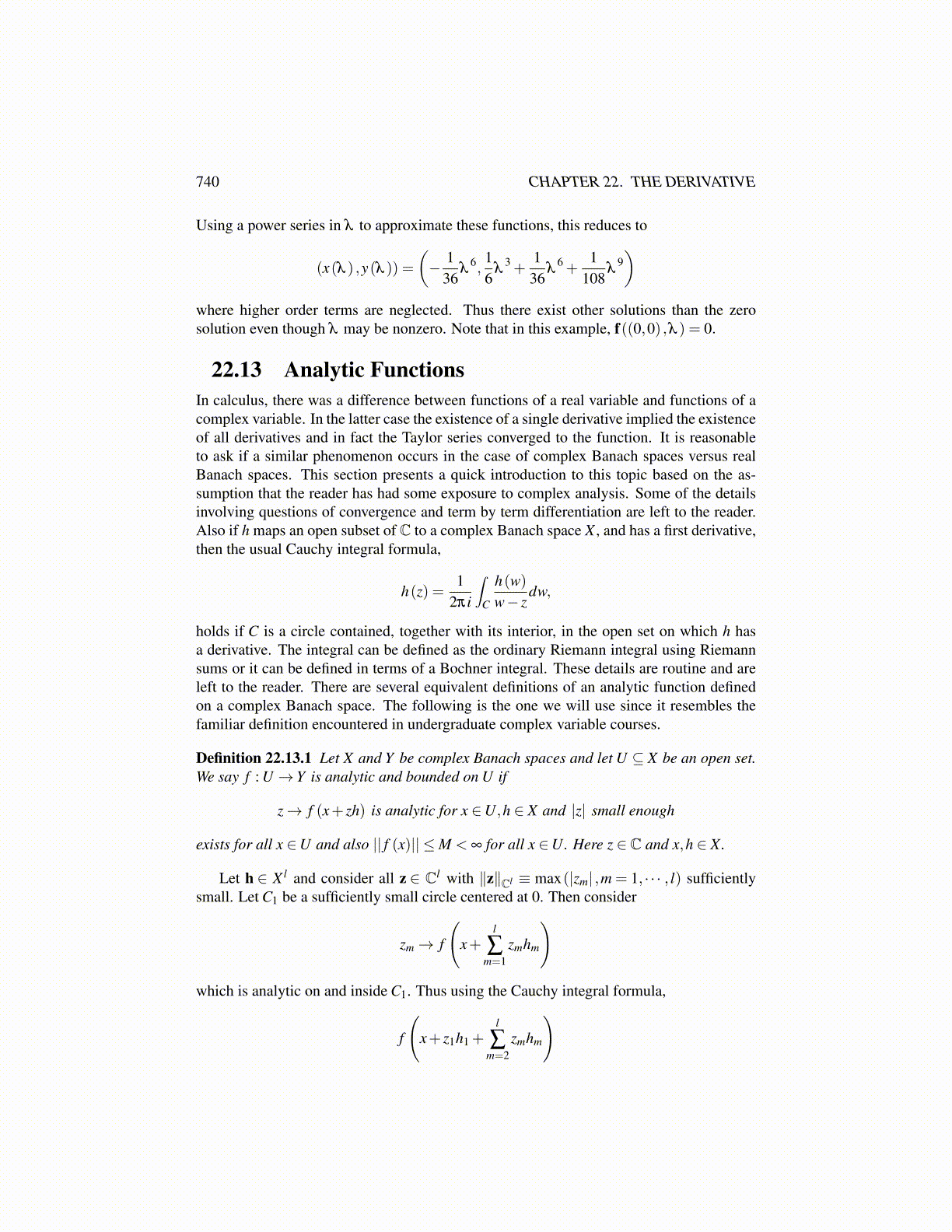
740 CHAPTER 22. THE DERIVATIVE
Using a power series in λ to approximate these functions, this reduces to
(x(λ ) ,y(λ )) =(− 1
36λ
6,16
λ3 +
136
λ6 +
1108
λ9)
where higher order terms are neglected. Thus there exist other solutions than the zerosolution even though λ may be nonzero. Note that in this example, f((0,0) ,λ ) = 0.
22.13 Analytic FunctionsIn calculus, there was a difference between functions of a real variable and functions of acomplex variable. In the latter case the existence of a single derivative implied the existenceof all derivatives and in fact the Taylor series converged to the function. It is reasonableto ask if a similar phenomenon occurs in the case of complex Banach spaces versus realBanach spaces. This section presents a quick introduction to this topic based on the as-sumption that the reader has had some exposure to complex analysis. Some of the detailsinvolving questions of convergence and term by term differentiation are left to the reader.Also if h maps an open subset of C to a complex Banach space X , and has a first derivative,then the usual Cauchy integral formula,
h(z) =1
2πi
∫C
h(w)w− z
dw,
holds if C is a circle contained, together with its interior, in the open set on which h hasa derivative. The integral can be defined as the ordinary Riemann integral using Riemannsums or it can be defined in terms of a Bochner integral. These details are routine and areleft to the reader. There are several equivalent definitions of an analytic function definedon a complex Banach space. The following is the one we will use since it resembles thefamiliar definition encountered in undergraduate complex variable courses.
Definition 22.13.1 Let X and Y be complex Banach spaces and let U ⊆ X be an open set.We say f : U → Y is analytic and bounded on U if
z→ f (x+ zh) is analytic for x ∈U,h ∈ X and |z| small enough
exists for all x ∈U and also || f (x)|| ≤M < ∞ for all x ∈U. Here z ∈ C and x,h ∈ X.
Let h ∈ X l and consider all z ∈ Cl with ∥z∥Cl ≡ max(|zm| ,m = 1, · · · , l) sufficientlysmall. Let C1 be a sufficiently small circle centered at 0. Then consider
zm→ f
(x+
l
∑m=1
zmhm
)
which is analytic on and inside C1. Thus using the Cauchy integral formula,
f
(x+ z1h1 +
l
∑m=2
zmhm
)